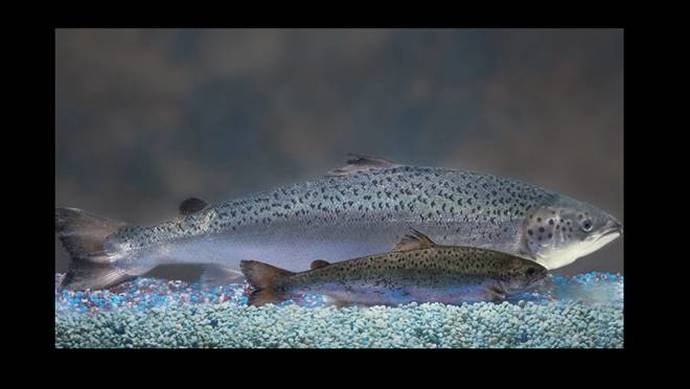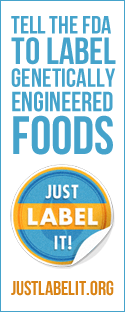|
Genetically modified salmon have been approved for sale in the United States, but labeling complications have prevented them from coming to market. In Canada, however, according to a report released Friday by the company AquaBounty, 4.5 tons of genetically modified salmon filets have been sold so far.
Also read, GMO apple soon to be sold in the United States. Eric Hallerman, an expert in fisheries and fish genetics at Virginia Tech who is not affiliated with the company, predicts that we will see many more genetically modified fish and other animals on shelves around the world in the future. The AquaBounty salmon, called AquAdvantage, is an Atlantic salmon that contains a growth hormone gene from a Chinook salmon. In the wild, salmon produce the hormone only when the conditions are right for rapid growth. In the AquAdvantage salmon, a regulatory switch from an ocean pout gene makes the fish produce growth hormone all the time, so the AquAdvantage salmon grow rapidly throughout the year. These fish, which are raised in fish farms, grow four to six times faster than other Atlantic salmon early in life, Hallerman said, and they reach market weight twice as fast. This shortens the total production time from three years to a year and a half and reduces the amount of feed they consume by 10 percent. Fish farms can be established on land in tanks, or in the ocean in floating net enclosures. AquaBounty originally intended to produce the genetically modified eggs and sell them to commercial fisheries, which would grow the fish primarily in floating nets, Hallerman said. He was involved in assessing the potential environmental impact of this plan and raised concerns about it. The salmon eggs AquaBounty produces are all female, and their number of chromosomes has been modified to make them sterile, like seedless watermelons. However, this process is not 100 percent successful, and Hallerman and others worried about the potential for these fast-growing salmon to escape and mix with wild populations. After raising these concerns with AquaBounty, the company agreed to address them, and, “they’ve stood by their word,” Hallerman said. AquAdvantage salmon eggs are produced in a land-based research facility on Prince Edward Island. If the eggs were to escape the facility, they would find themselves in salt water, where regulators predict they would be unable to survive. (Salmon hatch and develop in fresh water, then swim to salt water to spend most of their adulthood.) The eggs are then shipped to a land-based aquaculture facility in Panama, thousands of miles from the nearest Atlantic salmon population, where they grow to market weight. The FDA and Environment Canada conducted environmental analyses in light of these precautions and gave the fish the go-ahead. Last month, AquaBounty purchased a fish farming facility in Indiana. The company plans to begin sales in the U.S. in the second half of 2019, Dave Conley, a representative told The Washington Post in an email. When regulations in the United States will actually permit sale of the salmon remains unclear. The FDA approved the salmon in November 2015, and Health Canada and the Canadian Food Inspection Agency followed in May 2016. Sales began in Canada in 2017, Conley said. Because Health Canada concluded that these salmon are “as safe and nutritious for humans and livestock as conventional salmon,” labeling was optional and left up to the discretion of the grocers who distributed the filets. In the United States, the regulatory landscape is less straightforward. When it comes to GMO foods, “[regulators] found existing laws and stretched out the scope of those laws to cover biotechnology products,” Hallerman said, “and it’s awkward.” In some other countries, such as Australia, whole new acts were drawn up specifically to cover biotech products. In the United States, square pegs were shoved into round holes. For example, because many genetically modified plants are generated using a modified version of a bacterium that can be an agricultural pest, these plants are regulated as plant pests. Genetically modified animals are regulated as drugs, which is why the Food and Drug Administration is responsible. That could help to explain why these salmon, which were first developed back in 1989, are only now reaching the marketplace. Despite the 2015 approval, the salmon still hasn’t hit U.S. shelves due to a section in the congressional spending bill, which requires that the FDA finalize guidance related to labeling before imports can begin. The National Bioengineered Food Disclosure Act (signed into law in 2016) charges the Agriculture Department with developing a national mandatory standard for disclosing the presence of bioengineered material in food by July 2018. But it is unclear whether the FDA will align its labeling guidance with the USDA’s. Further complicating the debate, Sen. Lisa Murkowski (R-Alaska) just this month introduced a bill that would require the salmon to include the label “genetically engineered.” In the meantime, Hallerman said there are several genetically modified animals that have already been produced and are waiting for the salmon to carve their way through the regulatory landscape. In addition to other fish, these include cows and goats that produce nutritive compounds in their milk, disease-resistant livestock, mosquitoes that die before breeding, and more. SOURCE Jenna Gallegos, The Washington Post
0 Comments
Leave a Reply. |
Advertisement
News & Updates
Stay informed with the latest news around foodservice, agriculture and other related food news. Advertisement Opportunities
|


 RSS Feed
RSS Feed


